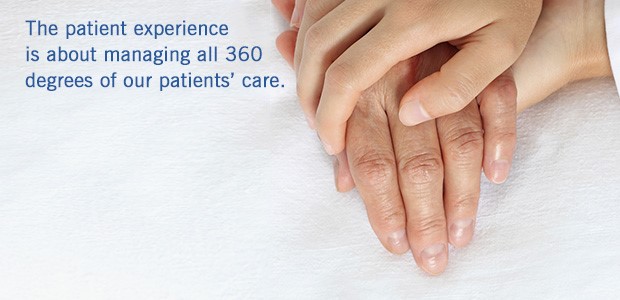Owning the patient experience is about managing 360 degrees of healthcare member care delivery. For healthcare organizations, that starts with understanding your ecosystem and every point of care interaction of your providers and their patients’. Empowering providers to own the patient experience begins with providing the right organizational operations structure in synergy with the software business management applications that enable both provider and patient interactions seamlessly.
Providers overestimate the quality of the healthcare delivery experience as compared to the perception of their patients’. Providers tend to say that the patient experience is critical to the success of their organization, yet leadership within these groups tends to rank the patient experience outside of their top five priorities. As consumerism continues to grow in other industries, the expectations of experience are upending other sectors such as healthcare. Access to real-time information, ease of mobile applications use, and expectations of customer service are just a few areas where the bar has been elevated for all consumer-driven businesses.
Due to legislation such as the Affordable Care Act, hospitals are buying other hospitals, physician practices, and ancillary care providers. These approaches are connecting care networks and delivering a more cohesive strategy to the healthcare delivery model. As this method continues to grow, it will become increasingly complex to control and carry on the expectations of the patient experience. As a healthcare organization, you must tightly track your change and risk management. As workflow changes, so do the software applications that manage them and vice versa. Are you continually evaluating and removing old software applications, streamlining your MDM, and providing a uniform workflow approach with software application across your healthcare delivery network? Removing the customized applications by regions that over time creates a burden on IT resources and strain your ability to provide providers and healthcare members the best patient experience.
How do we deliver a successful patient experience?
How do we then approach this issue to harness the best approach and solution? It starts with minimizing the amount of different software business applications required to deliver on the end-user workflow experience in various parts of the healthcare delivery model. Create a seamless experience and remove the silo approaches to healthcare delivery and its information. Areas such as Complex Case Management, Claims/Payment Recovery, Provider Portals & Member Portals, HEDIS Measures/P4P, Referral Management in line with Divisions of Financial Responsibility (DOFR) and Evidenced Based Medicine, and Quality Improvement (QI); we want to achieve a 360-degree healthcare delivery approach. It is about knowing the pulse of your organization and providing the right information, at the right time, making it accessible and actionable and steering outcomes through a lens of leadership, providers, and healthcare members.
For patients’, this means being able to access their healthcare information easily online. Real-time information in a concise, easy-to-understand user interface, providing access to educational information, technology for provider appointment scheduling, medication and appointment reminders. Using various workflow interaction points that create alerts and notifications that bring the provider and patient together. Your patients’ are a part of your Care Team; engage them as such, and empower them to participate in their care.
For providers, this means providing the coup and contrecoup to the patient engagement and healthcare delivery. For example, if a patient receives a notification that a medication prescription is overdue that was supposed to be filled post-hospital inpatient discharge, does the provider receive an alert about the same information? Use technology and point of care interaction to create a bridge between providers’ and their patients’. This is a twofold approach of putting useful and actionable information in place across Care Team members to prevent avoidable readmissions. Are we being intuitive to the providers’ needs and providing a platform for success so that they can deliver the right patient experience?
Organizational readiness is being able to deliver on the patient experience by instituting systematic approaches to aligning strategy with people, process and technology, and tools and capabilities.


